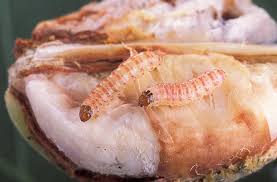Pink Bollworm (PBW) Attack:

Haryana has seen an overall fall in acreage under cotton cultivation to 4.76 lakh hectares (lh) this kharif season from 6.65 lh in 2023. The reduction in the cotton area — also reported in neighbouring Rajasthan and Punjab — has been attributed mainly to PBW infestation.
- The pink bollworm first appeared in north India during the 2017-18 season in a few districts in Haryana and Punjab, primarily cultivating Bt cotton, and spread to Rajasthan by 2021.
- The pest’s infestation has not been the only factor. In May-June this year, at the time of sowing, the price of kapas (raw unginned cotton) averaged Rs 6,700-6,800 per quintal in Haryana mandis.
- This was against the average Rs 11,100-11,200 per quintal two years ago.
Pink Bollworm (PBW) is a destructive pest affecting cotton crops worldwide, including India. - PBW, known among farmers as gulabi sundhi, damages the cotton crop by burrowing its larvae into the cotton bolls. This results in the lint being cut and stained, making it unfit for use.
- The pest reduces cotton yield and affects fibre quality, leading to economic losses for farmers.
- Infestation leads to premature boll opening, lint damage, and poor seed development, which diminishes the commercial value of cotton.




